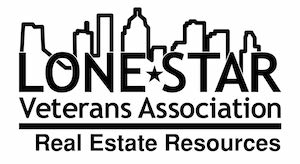Pawn shop, school, tattoo parlor, liquor store, retailer, suburban home, high rise, strip mall. There’s a sneak preview of your eyes’ average sights driving down a random major street in Houston, Texas.
For those of you who don’t live here or just don’t pay attention to strange, non-complementary places positioned right next to one another, Houston has no zoning. We’ll repeat that: Houston has NO zoning.
Not “weird zoning” or “loose zoning”, but NO zoning. The forces of good old-fashioned capitalism dictate the use of the land around here (well sort of…).
That isn’t to say there are no restrictions on what gets built in the City of Houston. In fact, all regulations that do exist are enforced by the city’s Department of Planning and Development. Furthermore, deed restrictions have been adjusted by developers over the years to make up for potential planning issues, and HOAs have instituted their own intra-quarters regulations to limit certain building as well. Rather, there are no formal LEGAL restrictions on what gets built and where it is placed, which leads to several major issues inside the city, as well as some interesting quirks.
Here are five ways the lack of zoning affects Houston life and how you can navigate it.
#1: Solo High rises abound.
Houston’s inner loop neighborhoods have always been hot, but there was a time when the areas outside the city boomed just as much if not more. Over the last five to ten years, though, the inner loop’s popularity has skyrocketed. And given Houston’s recent population explosion, the metropolitan areas have taken on a new level of density. The lack of zoning allows for developers to build high rises literally overlooking the backyard of single family homes. Unlike many cities, Houston’s skyline isn’t made up of the cluster of highrises in downtown. Rather, high rises reach up from the ground sporadically across the west inner loop.
Tips surrounding high rises: If you are looking for an opportunity to take on a lifestyle similar to the northeast but live in the south, a Houston high rise may be your answer. Houston is currently seeing a boom in high rise buildings in every inner loop neighborhood, from Highland Village to Upper Kirby to Montrose, Midtown and more. Many of the newest high rises in the city also have commercial shops built in, resulting in residential buildings with commercial components that make shopping or fine dining easy.
On the other hand, be aware of the high potential traffic in high rise areas. Also be aware of the potential that you will rent or purchase near a high rise, a probability you will want to consider as one factor in buying or renting a home.
#2: Expect strange commercial and residential bedfellows.
If you like eclectic, lack of zoning is for you. It doesn’t get any more eclectic than seeing virtually anything next to anything else.
Of course, there are some natural limitations that have been set by the culture itself. It’s rare to see a factory next to a fancy restaurant, and you can always expect some degree of community pressure to keep people from launching, say, a rock and roll club directly next door to residential housing (Fitzgerald’s and other older establishments aside). And there are laws regarding an adult establishment that sells booze near a church or a school, so if you like to keep your education and spirituality clean, you’re probably OK.
Tips surrounding strange establishment combinations: Thoroughly investigate your surrounding area inside the inner loop before renting or buying. The heavy majority of the time, you will actually be quite pleased with what you find. Most Houston inner loop neighborhoods have a great combination of restaurants, parks and shops that are within walking distance because of the lax regulations on commercial property. But do a walkthrough (and/or a drive through) of the surrounding area, just to be safe.
#3: Cars are king… at least for now.
This is really a chicken-and-egg situation, but the lack of zoning certainly has something to do with driving in Houston. 90% of Houstonians own cars, and while many of Houston’s neighborhoods are indeed far more walkable than you would (Part 2 of the Most Walkable Houston Neighborhoods), the city does still largely rely on the automobile. In that respect, looser zoning makes sense in that it allows planners, developers and builders to arrange the city in unorthodox ways that may make more sense than if Houston had a fully developed public transit infrastructure. On the other hand, the city has taken great strides toward creating working public transit solutions, including bike-sharing programs and rail developments, as well as ongoing attempts to improve the bus system.
The zoning laws also indirectly make parking easier. The city code requires a certain amount of parking for patrons.
Tips surrounding cars: Where do we start? Expect to spend plenty of time in traffic unless you can find a way around it by designing your experience so perfectly as to rely on transit, biking and walking, as some downtown and Montrose employees have determined how to do. If you work outside the loop, plan your routes carefully; while traffic has some general directional trends based on the location of downtown and the more heavily populated suburbs, there is also a constant sense in the morning, lunch hour and afternoon rush hour that everyone is going everywhere all at the same time. Throw in the random backup due to construction and accident (both of which happen in different areas several times per day) and you have a situation that demands conscious route mapping prior to undertaking your journey.
Also check out the exact minimum parking requirements if you want to start a business in Houston, as some businesses may need to find interesting ways to create parking in some of the more challenging areas of town.
#4: City ordinances pop up naturally to implement their own restrictions.
Zoning is inherently a lack of restrictions, but that doesn’t mean you can expect the city to stand by without placing limitations on how, where, when or why things are built. Rather, lack of zoning means more city ordinances instead of less, as decision-makers work to bypass what would have been zoning issues to control the urban environment.
For example, there are no rules specifically regarding residential and commercial save for the aforementioned few and far between limitations; however, there is some discussion surrounding lot sizes as an aspect of residential or commercial development. At the end of 2011, as a way of combatting housing costs, the City of Houston proposed decreasing lot size requirements for housing outside the loop, an idea revisited in 2013. Housing inside the loop is lax in this regard, but the lot size debate is one that is sure to continue for the foreseeable future in one of the most prosperous and fastest growing cities in America.
Tips surrounding lot size requirements passed due to zoning: Developers, city officials and residents may all take different sides on this issue, but as a new resident or potential new resident, regulations will impact you drastically different than they otherwise would. On one hand, you may not feel the impact at all if you are seeking a home inside the loop. On the other hand, if you wish to rent or purchase property outside the loop, then these regulations become a major impact on the building and lot purchasing process, affecting taxation levels, price and size restrictions. Like any good citizen of Houston, stay in touch with City Council discussions as they progress. If you are considering moving to the city, find information from all sources on lot requirements, including the city, developers and HCDD.
#5: HOAs flex their muscles on everything from behavior to home appearance
HOAs have the interest of controlling the environment surrounding their areas to preserve property value and maintain something in line with their deed restrictions and their preferences. These restrictions can span everything from the color of your garage door to whether or you can drink alcohol in your neighborhood’s commercial establishments.
That’s right. HOAs can restrict where you can consume.
The Heights, for example, is technically a dry Houston neighborhood, seemingly a crime in a city where the cocktails, beer and wine flow free. As one past Houston Heights Association President puts it, “I mean we all drink… We’re sort of like what Will Rogers said about Oklahoma. That the people of Oklahoma would vote dry as long as they could stagger to the polls. That’s something like we are too.”
An area in the Heights is the only part of Houston that is officially dry, and even that regulation may be more customary than impactful. One example is some bars and restaurants have gotten around restrictions by offering membership cards, a loophole used in towns in the Texas Hill Country as well.Besides that, there are plenty of places to drink in the Heights area, including the entire Washington Avenue corridor just to the south, which just goes to serve as yet another example of the free and independent spirit of Houstonians. We’re nice people, but we generally don’t let too many rules get in the way of good times.
Tips surrounding HOAs: Get on the good side of your HOA, particularly the members of the board. Make a good first impression. Bake them cookies if you need to. Learn the rules and fees of your HOA if you have one, and figure out how to create the best possible living situation within its rules. Always check the deed before repairs to see if you are covered and how you are limited. You may even want to get on the board yourself.
Whatever you do, KNOW the basic rules of your HOA before you buy or rent in an area so that you can make an informed decision on whether or not you can live by them.
Want to know more about Houston neighborhoods? There’s plenty to see! Check out the city’s top hiking and biking trails, the Ultimate Houston Guide to Dog Parks and Ten Things You Need to know Before Moving to Houston.

